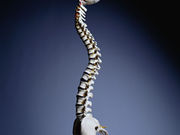Only D-dimer level at two weeks after injury accurately predict deep vein thrombosis formation
TUESDAY, Nov. 10, 2015 (HealthDay News) — For patients with acute traumatic cervical spinal cord injury (SCI), D-dimer levels can predict the likelihood of developing deep vein thrombosis (DVT), according to a study published in the Nov. 1 issue of The Spine Journal.
Muneaki Masuda, M.D., from the Japan Labour Health and Welfare Organization Spinal Injuries Center in Iizuka, and colleagues conducted a prospective clinical study to define the epidemiology and incidence of DVT in acute traumatic cervical SCI in a Japanese population. A total of 268 patients with acute traumatic cervical SCI were enrolled; 211 patients remained after excluding early drop-out patients. Neurologic status assessment and blood chemistry were performed every week until one month after injury.
The researchers identified DVT in 10.4 percent of patients. All patients who were positive for DVT had severe paralysis classified as C or greater on the American Spinal Injury Association Impairment Scale. Of the clinical and laboratory parameters, only the D-dimer level at two weeks after injury could accurately predict DVT formation, with 16 µg/dL as the optimal threshold of D-dimer for prediction. For detecting DVT, the sensitivity and specificity were 77.3 and 69.2 percent, respectively.
“D-dimer levels may be used to predict the likelihood of DVT development in patients with acute cervical SCI,” the authors write. “Such a screening test would be cost-efficient and simple to administer and could then be followed with additional investigations, such as ultrasonography or venography.”
Copyright © 2015 HealthDay. All rights reserved.








